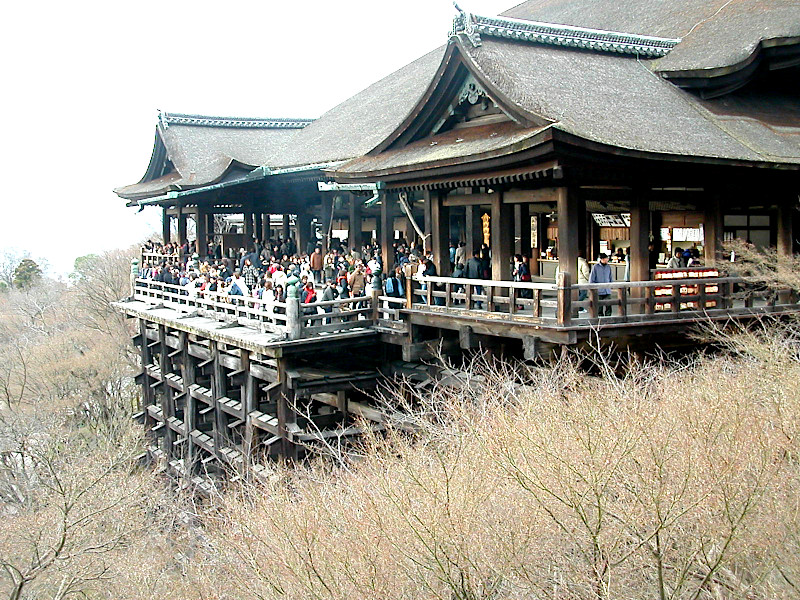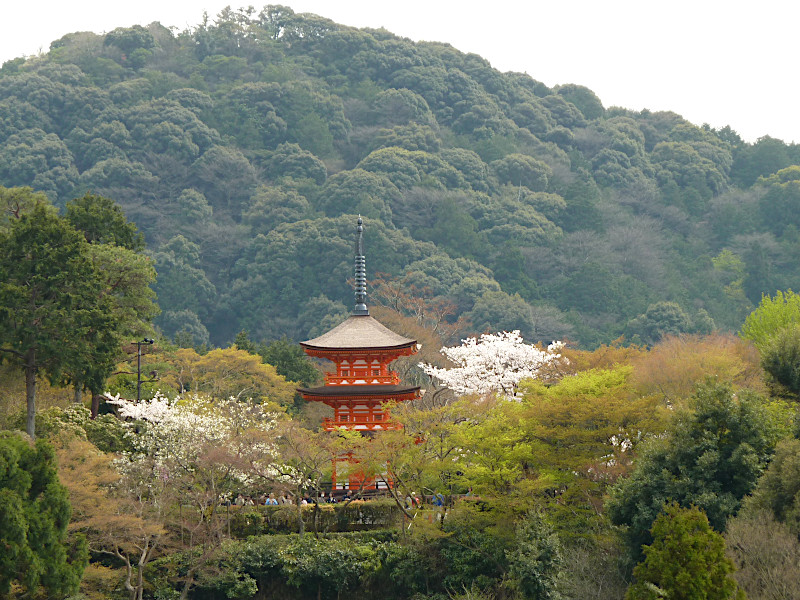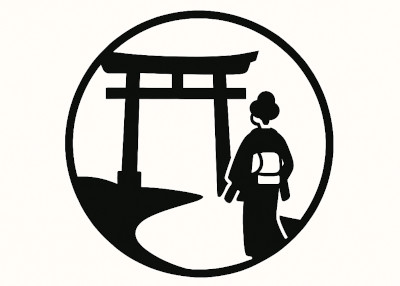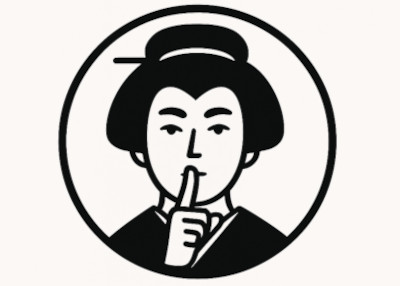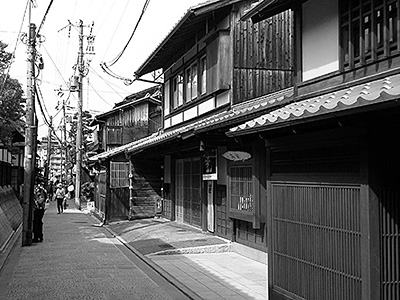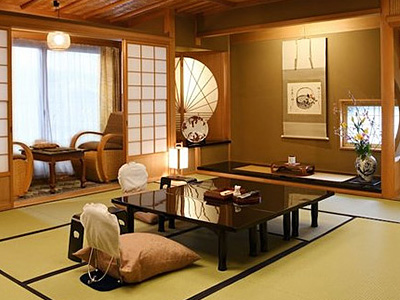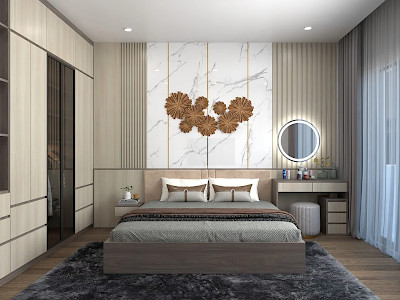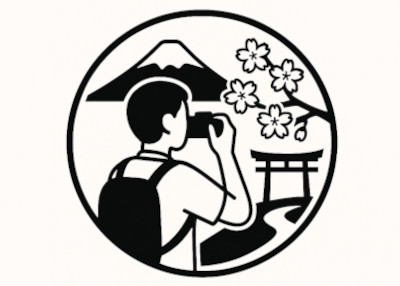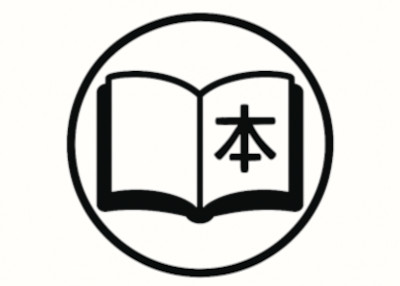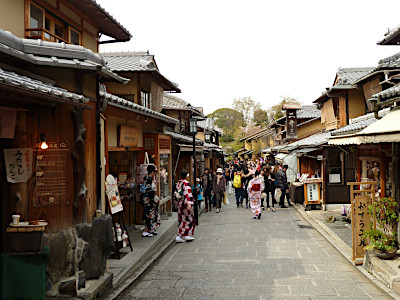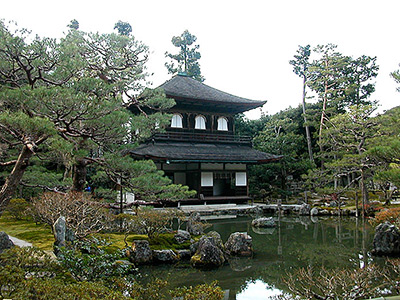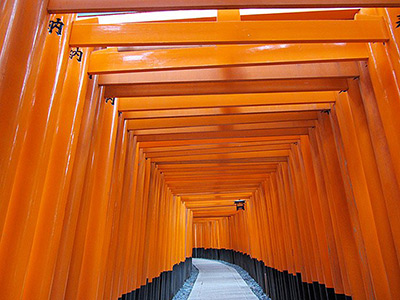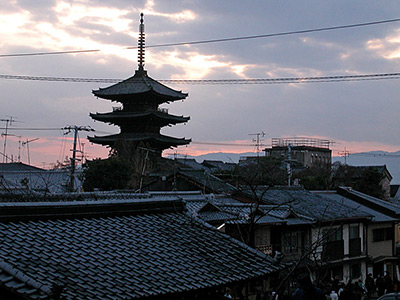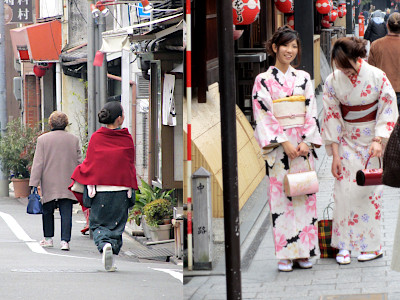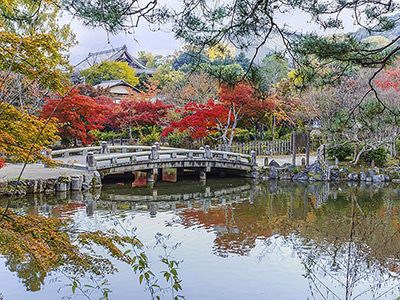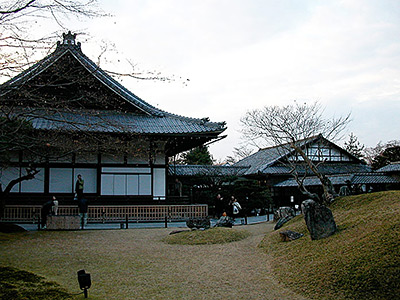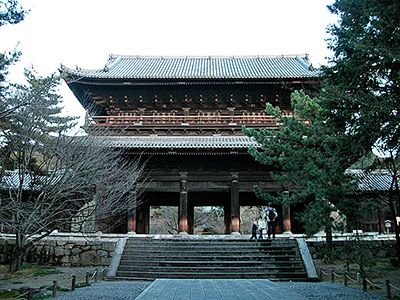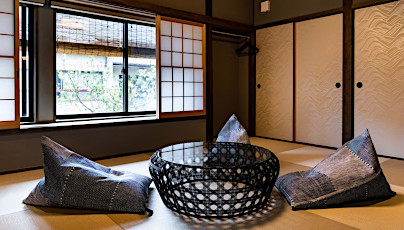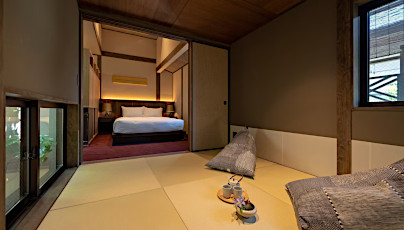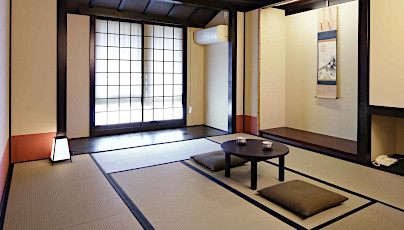Kiyomizu-dera Temple in Kyoto
This post can contain affiliate links, which means that we may receive a small commission if you make a purchase using these links.
Facts & Figures
Kiyomizu-dera ("Pure Water Temple") is one of the most famous and popular Buddhist temples in Japan. Kiyomizu-dera is also part of the seventeen UNESCO World Heritage Sites in Kyoto. The main hall with its wooden stage hovering 13 meters above ground is a masterpiece of Japanese temple architecture and a tourist hotspot.
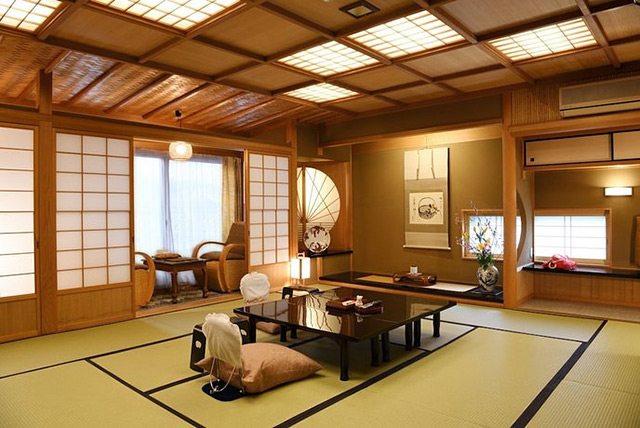 Experience the Ultimate Japanese Hospitality at a Kyoto Ryokan.
Experience the Ultimate Japanese Hospitality at a Kyoto Ryokan.
Find Your Perfect Ryokan Now >
Interesting to know there was no nail used for the entire structure. The temple was built on the site of the Otowa Waterfall. The waterfall's pure water was the name giver for the temple. The whole temple complex covers an area of over 130,000 square meters and includes several other buildings like the Okunoin Hall, and Jishu Shrine, dedicated to Okuninushi, a god of love and "good matches".
- Kiyomizu-dera Temple:
- Opening Hours - 6:00 am to 6:00 pm (whole year)
- Admission Fee - 400 yen (Adults), 200 yen (Elementary and Junior High School Students)
History
Kiyomizu-dera was founded in 778. The temple complex was destroyed many times by fire and earthquakes. The buildings today were constructed between 1631 to 1633 by the order of shogun Tokugawa Iemitsu (1604 - 1651). The temple was linked in the past to the old Hosso sect, but in 1965 the priests formed the new independent Kita Hosso sect under the leadership of Onishi Ryokei (1875 - 1983). Kiyomizu-dera has since 1994 been part of the UNESCO World Heritage Sites list of the Historic Monuments of Ancient Kyoto.
Location

Kiyomizu-dera is located within the beautiful Higashiyama District in the eastern part of Kyoto.
Address: 1-294 Kiyomizu, Higashiyama-ku, Kyoto 605-0862, Japan
How to get to Kiyomizu-dera?
- 15min from Kyoto Station to Gojozaka bus stop by bus number 100 or 206 and
- 10min walk from Gojozaka bus stop to Kiyomizu-dera temple
Sightseeing spots at Kiyomizu-dera
Top:
Kiyomizu-dera Main Hall (Hondo) - The hall is famous for its wooden veranda (Butai) and it is a must-see on your Kyoto trip. The main hall was rebuilt in 1633. The renovation of the roof took from 2017 to 2020. For the whole structure, there was not a single nail used. The veranda covers an area of 190 square meters made out of 410 hinoki boards (Japanese cypress). It was built on top of eighteen 400-year-old wooden pillars (zelkova trees), which reach a height of 13 meters. Hondo is housing a small statue of the eleven-faced and thousand-armed Kannon (Bodhisattva of mercy).
Okunoin Hall - The structure is similar to the main hall, but just on a smaller scale. The building above the Otowa-No-Taki (Otowa waterfall) includes also a veranda supported by pillars. Be aware it can get really crowded, because of the amazing view over Kyoto from up there. The hall is dedicated to the Shaka and the Amida Buddha.
Koyasu Pagoda - Koyasu means "an easy childbirth". It is said that when a pregnant woman reaches the red-coloured three-storied pagoda the baby will arrive safely. The pagoda belongs to the Taisanji Temple and was rebuilt in 1500. Koyasu was moved to the its current location in 1911.
Zuigudo Hall - The hall was rebuilt in 1718 and is dedicated to the mother of Buddha. Zuigudo contains a stone with the word womb on it. You have to circle the stone and make a wish. Daizuigu Bosatsu (mother of Buddha) will take care of it. Btw before you reach the stone you have to walk through a completely dark corridor (Tainai meguri). It symbolises the womb of a female Bodhisattva.
Nio-mon gate - The two-storied entrance gate guarded by two Deva statues has the status of an important cultural property. It was renovated and brought back to its former glory in 2003. Nio-mon is an impressive structure with a height of 14m, width of 10m, and depth of 5m.
Sai-mon (West Gate) - The gate with its cypress-bark roof is a reconstruction dating back to the year 1631. The original gate with eight pillars was destroyed by fire.
Jishu-jinja - The Jishu Shrine is dedicated to finding true love with a future wife or husband. It includes a pair of "love stones" (Mekura-ishi), which are 18 meters apart from each other and singles should find out the secret to finding true love:) Do not forget to touch there the little bronze statue with the name Nade-Daikoku-San. All your wishes come true when you do it.
Hyakutai-Jizo-do (One Hundred Jizo Hall) - The small building enshrines almost 200 stone "Jizo" images.
Otowa-No-Taki - The Otowa waterfalls belong to the ten most famous pure water sites in Japan. The sacred water (water of gold) is divided into three streams with three different meanings. Drink from them and reach success at school, a happy love life, and longevity. You will see many students there, who are praying for good results in their tests. Close to the waterfall, there are 3 small halls located - Okuno-in, Shaka-do (built in 1631, an important cultural property), and Amida-do.
Asakura Hall - The hall is dedicated to Kannon and Jizu and was donated by feudal lord Sadakage Asakura (1473-1512).
Belfry - The huge 2.3-ton bell was cast in 1478. The whole structure was rebuilt in 1607.
Festival & Events (dates can change without notice)
March/April
Seiryu-e Blue Dragon Festival (14/15th of March, 3rd of April)
Three armoured men and a 18m long dragon appear with a large procession at the Kiyomizu-dera temple. The dragon belongs to the four divine god-beasts and stands for the Kannon. Enjoy the great music and this colourful event.
Spring Illumination during Hanatoro (27th of March till 5th of April)
Enjoy the great illumination of the Kiyomizu-dera temple complex during the cherry blossom season from 6:30 pm till 9:30 pm.
April
Miyako Odori (1st - 31th)
The traditional annual spring dance of the Kyoto district Gion Kobu performed by Geiko and Maiko is a must-see on your Kyoto visit. Don't miss the most popular dances the Miyako Odori "Cherry Blossom Dances" or "Dances of the Old Capital" at the Gion Kobu Kaburenjo Theater (located close to Gion Corner).
May
Aoi Matsuri (15th)
The highlight of this festival is a large parade from the Imperial Palace through the Shimogamo Shrine to the Kamigamo Shrine. More than 500 people wearing aristocratic costumes from the Heian Period (794 - 1185). The Aoi Matsuri belongs with the Gion Matsuri and Jidai Matsuri as the three most famous festivals in Kyoto.
July
Gion Matsuri (whole month)
The month of July is full of different events like the Yoiyama - Kyoto's Magical Night (locals in kimonos look at the giant Gion floats the day before the parade) or the famous Yamaboko Junko (float procession on the 17th of July).
September
Seiryu-e Blue Dragon Festival (14/15th)
Three armoured men and 18m long dragon appear with a longer procession at the Kiyomizu-dera temple. The dragon belongs to the four divine god-beasts and stands for the Kannon. Enjoy the great music and this colourful event.
October
Jidai Matsuri ("Festival of Ages") (22nd)
People celebrate with a large parade between Imperial Palace to Heian Shrine the anniversary of the foundation of Kyoto. App. 2000 participants wearing historical costumes from different time periods. Enjoy this great festival which lasts around 2 hours.
November
Fall Illumination (18th - 30th)
Enjoy the great illumination of the Kiyomizu-dera temple complex during the autumn leaf season from 6:30 pm till 9:30 pm.
Where to stay in Kyoto?
Book your Flight Tickets and Rental Car for your Japan trip
Day trips from Kyoto:
Travelers who viewed Kiyomizu-dera viewed also:
Top rated - Best Machiya Houses in Kyoto
THE MACHIYA Ebisuya, 192 Ebisuya-cho Shimogyo-ku, Kyoto 600-8062
This 3-star guesthouse got an excellent rating. All 30 individually furnished rooms offer free WiFi, air conditioning, bathrooms incl. toilets, fridges, 40-inch flat-screen TVs, and more. THE MACHIYA Ebisuya is located in central Kyoto.
View on Expedia.com
This 3-star guesthouse got an excellent rating. All 30 individually furnished rooms offer free WiFi, air conditioning, bathrooms incl. toilets, fridges, 40-inch flat-screen TVs, and more. THE MACHIYA Ebisuya is located in central Kyoto.
View on Expedia.com
The Machiya Kazahaya, 570-6 Kazahayacho, Shimogyo-ku, Kyoto, Kyoto, 600-8475
The Machiya Kazahaya offers for all guest rooms free WiFi, air conditioning, safes, bathrooms with toilets, refrigerators, and much more. Enjoy also the beautiful Japanese Garden. Guests gave this property the rating - Exceptional.
View on Expedia.com
The Machiya Kazahaya offers for all guest rooms free WiFi, air conditioning, safes, bathrooms with toilets, refrigerators, and much more. Enjoy also the beautiful Japanese Garden. Guests gave this property the rating - Exceptional.
View on Expedia.com
Kyomachiya Ryokan Sakura Urushitei, 425 Kichimonjicho, Shimogyo-ku, Kyoto, 600-8069
This beautiful 3-star guesthouse offers 32 rooms with free WiFi, air conditioning, bathrooms incl. showers and toilets, refrigerators, and much more. Enjoy also the relaxing indoor public bath (no minerals). Guests gave this property the rating - Wonderful.
View on Expedia.com
This beautiful 3-star guesthouse offers 32 rooms with free WiFi, air conditioning, bathrooms incl. showers and toilets, refrigerators, and much more. Enjoy also the relaxing indoor public bath (no minerals). Guests gave this property the rating - Wonderful.
View on Expedia.com

